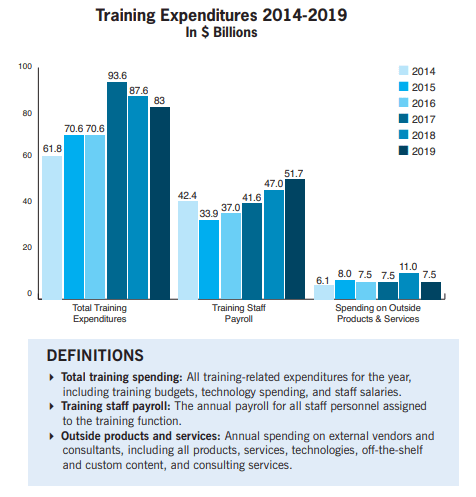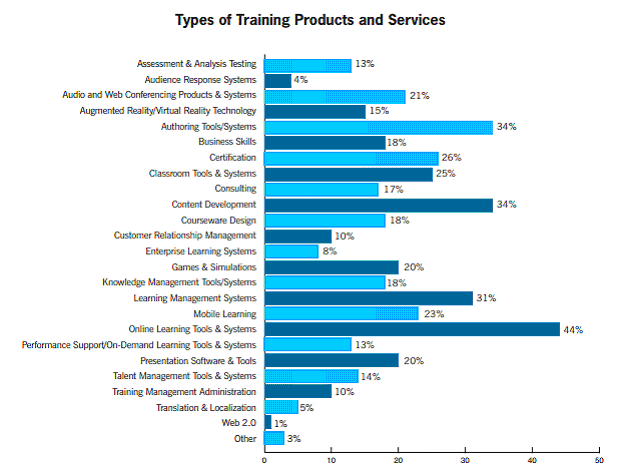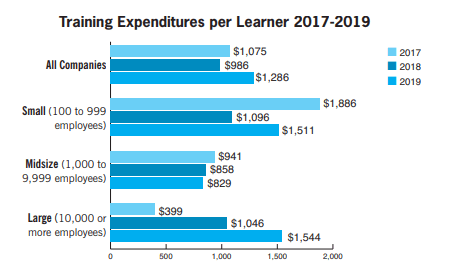
It’s no debate that the world is becoming increasingly globalized and its impact on businesses and cost ever increasing. Regardless of the size of a business or where it chooses to operate, one necessity remains constant, and that’s the need for costings to be accurate.
Businesses are increasingly facing three challenges in the 21st century more than ever before –
- Hiring and retaining new talents due to employee turnover
- Increased national & international, government / industry regulatory demand
- Technology driven pressure to do more with less in an increasingly global marketplace.
To meet all of the above challenges you need to figure out accurate costing of all your business activities including your cost of Learning and Development
However, Money isn’t the only thing you will spend on training employees; you also need to put in your time to support the initiatives – sometimes much more than originally anticipated or budgeted. . According to the ATD report, employers use an average of 33.5 training hours per employee.
Of course, the cost of L&D programs won’t be the same for every business – it varies significantly on various factors that will determine the REAL cost. These factors are –
1. Business size – Training costs are higher for small businesses than large corporations while large corporations spend more time training employees than smaller businesses.
2. Industry – Some industries require extensive training. Specialized training for dangerous jobs is typically more expensive.
3. Skill sets – Businesses may need to spend more time or use more resources for some employees.
4. Training method – On-the-job, Classroom, Web-based, Lab-based, Simulations, etc.
Direct cost and Indirect costs of Training
Training encompasses much more than what happens within the four walls of the classroom itself. There are direct infrastructure cost of talent, logistics, training materials, vendor management, and employee engagement that must come together for effective learning to occur. And then there are indirect cost that happens in the background – most of which are not included (typically) in the training budget, but related to training nevertheless, without which training would not occur. In this article – I’ve identified what some of those costs are and present some of the industry average data so one can easily find out if a learning organization is spending too little or too much on a given expense category.
As past Board Member of ATD, US’s largest Association of Training and Development, I had the opportunity to participate in collection and analysis of T&D data, including L&D expenses in US and trends. The Training Magazine Industry Report, a report that all L&D professionals should get familiar with, to know what the industry trends are, and how they stack up to their own national numbers. In this discussion it is pertinent to look at some of these numbers to let the reader evaluate his/her own company’s direct and indirect costs compared to the industry’s.
Both direct and indirect costs should be included when determining the true cost of any corporate training effort so that budgets can be determined and the ROI of corporate training calculated. (I purposely avoided to reference the 2020 Report as it’s not a true representation of industry stats due to the fact Covid affected the L&D industry more seriously compared to many other departments in US corporations).

Here is a table that details where most of DIRECT expenditures (Training Products and Services) were spent:

On a ‘Cost-per-Learner’ basis – here are the industry average numbers for Small, Medium and Large companies:

The most typical L&D DIRECT Costs were as follows. Numbers denote % of total budget. The numbers do not add up to 100% because we are talking about industry average, and not one particular company.

The most typical L&D INDIRECT Costs were as follows. These expenses were shared with other departments and/or disciplines

Going forward to 2020 and beyond it can be safely said that the highest priorities for training in terms of allocating resources in 2020 are as follows:
- Increasing the effectiveness of training programs (37 % in 2019 vs. 34 % in 2018)
- Measuring the impact of training programs (18 % in 2019 vs. 19 % in 2018)
- Reducing costs/improving efficiency (14 % in 2019 vs. 19 % in 2018)
- Increasing learner usage of training programs (12 % in 2019 vs. 13 % in 2018 )
- Learning infrastructure and obtaining revenue through external training were at 3% in 2019 and 2 % in 2018
Learning and development represents a significant expenditure in larger organizations. In some companies, the learning and development budget exceeds $500 million and may reach as much as $1 billion (Phillips, 2009). Given the size of these investments, it is not surprising that business leaders are demanding accountability and visibility into the value delivered
Unfortunately, many chief learning officers (CLOs) have blind spots on the exact expenses (Direct and Indirect) that influence their incorrect perceptions about their Return on their Investments.
In conclusion
Based on the above variables businesses tend to have real difficulty calculating the end cost of implementing necessary learning and development programs. How much is your cost per learner compared to industry average for your size of company and similar business objectives?
This article will give you some insight into some of the cost factors you must take into consideration while estimating your REAL cost of implementing your L&D programs.






